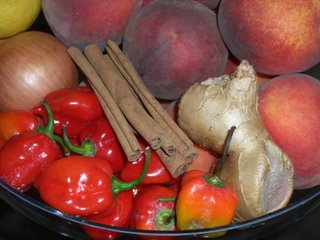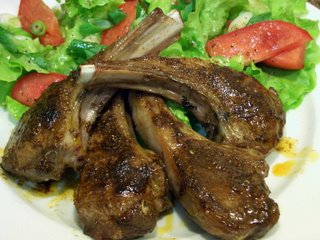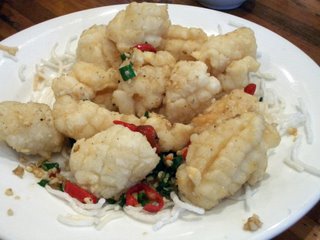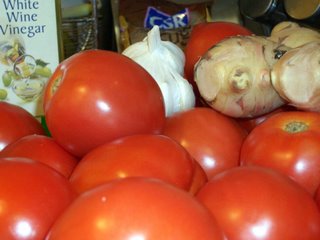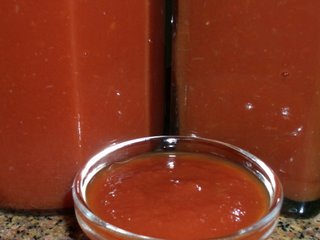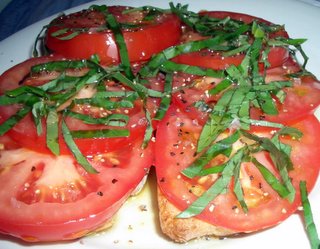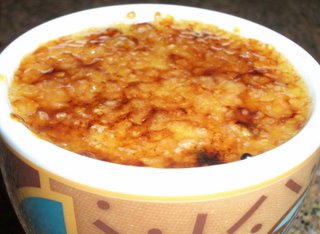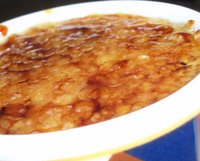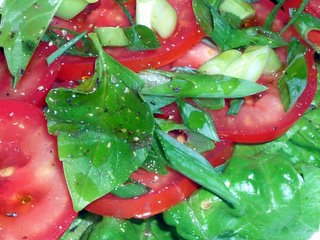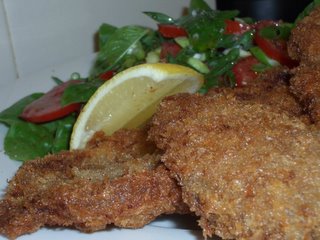Master Stock Chicken
 When I was in Beijing I was told that some restaurants have had their master stock on the go for centuries, passing the coveted liquid down from generation to generation. I haven’t had mine for quite that long, but it is true that it ages well and can be kept for long periods of time in the fridge or freezer. I love cooking chicken this way because it’s so bloody (opps – apologies to people from the UK) easy and the texture and taste of the chicken is divine. The gentle cooking gives the bird a succulent silken quality and it’s just as nice eaten straight away warm, or cold shredded through a salad. I usually cook two small chickens so I can enjoy it both ways.
When I was in Beijing I was told that some restaurants have had their master stock on the go for centuries, passing the coveted liquid down from generation to generation. I haven’t had mine for quite that long, but it is true that it ages well and can be kept for long periods of time in the fridge or freezer. I love cooking chicken this way because it’s so bloody (opps – apologies to people from the UK) easy and the texture and taste of the chicken is divine. The gentle cooking gives the bird a succulent silken quality and it’s just as nice eaten straight away warm, or cold shredded through a salad. I usually cook two small chickens so I can enjoy it both ways.The basic stock I use is adapted from a recipe of Master Chef Cheong Liew of the Grange Restaurant in Adelaide.
100 ml dark soy
10 g fresh ginger, bruised
50 ml light soy
100 mls shao xing tice wine
3 or 4 pieces of dried tangerine peel*
6 pieces of dried liquorice root*
100 g yellow rock sugar*
500 ml water
1 teaspoon of szechuan pepper
5 whole star anise
½ teaspoon whole cloves
1 cinnamon stick
½ teaspoon chilli seeds or dried chilli flakes
1 teaspoon cumin seeds
1 teaspoon fennel seeds
* You can get these from Asian supermarkets
Combine everything in a large pan, bring to the boil, and simmer for 1 hour (you can put all the spices in a muslin bag, making them easier to remove, but if you strain the stock anyway it’s not absolutely necessary). Turn off the stock and let it cool for a while before straining out the aromatics.
 Return the stock to your pan and bring the heat back up to just below boiling. Wash your chicken and pat it dry. If you want to, you can blanch the chicken in boiling water, lifting it in and out for a minute or so, then put it into the hot master stock. I rarely bother with this step but if you put it straight into the stock you need to re-boil the stock and strain it before you store it to make sure there are no impurities and nasty chicken bugs.
Return the stock to your pan and bring the heat back up to just below boiling. Wash your chicken and pat it dry. If you want to, you can blanch the chicken in boiling water, lifting it in and out for a minute or so, then put it into the hot master stock. I rarely bother with this step but if you put it straight into the stock you need to re-boil the stock and strain it before you store it to make sure there are no impurities and nasty chicken bugs.Place the chicken breast side down into the stock and make sure the chicken is immersed all the way through cooking otherwise you can end up with raw bits. You can put a heavy plate on top to make sure. Bring the master stock to the boil, turn it off, cover with a lid and let the chicken steep in the hot stock for an hour. (I’ve actually left it there to cool totally on occasions if I’m using it for a cold dish). Remove the chicken gently from the pot and place it on a plate to rest for 30 minutes, slice (Chinese style if you can) and serve.
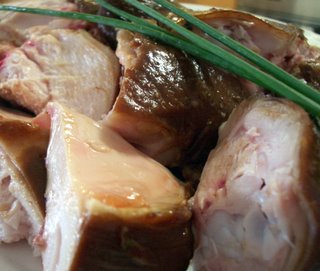 If you’ve never done this at home before, I urge you to give it a go. The chicken is so sweet and fabulously flavoured and the consistency is like moist soft silk. I also love the contrast between the deeply caramel skin and the snow white chicken meat underneath – it’s almost like a magic trick the contrast is so dramatic. Serve it with rice, fresh rice noodles is my personal favourite, or steamed/stir fried vegetables.
If you’ve never done this at home before, I urge you to give it a go. The chicken is so sweet and fabulously flavoured and the consistency is like moist soft silk. I also love the contrast between the deeply caramel skin and the snow white chicken meat underneath – it’s almost like a magic trick the contrast is so dramatic. Serve it with rice, fresh rice noodles is my personal favourite, or steamed/stir fried vegetables.Once you're finished with the stock, strain it, re-boil it for about 10 minutes, let it cool and store in the fridge for a week or so or the freezer if you want to use it monthy or less frequently. Add more water, soy and aromatics as it ages.




